#Victorien Sardou
Text
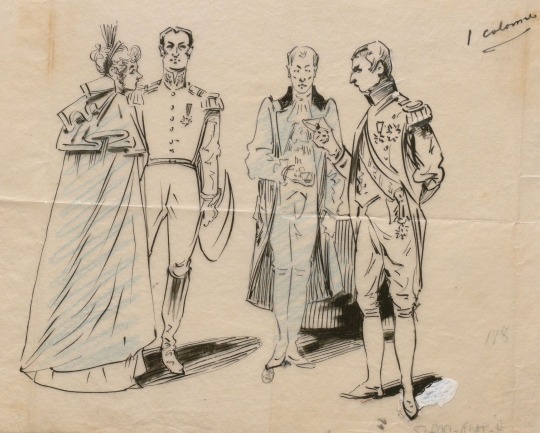

Vintage illustrations of Napoleon, by Albert Mantelet, drawings for the press, 1893.
[At Victorien Sardou's theatre: Madame Sans-Gêne]
Madame Sans-Gêne is Victorien Sardou's most popular play, in France and abroad.
#Madame Sans-Gêne#Victorien Sardou#Sardou#theatre#theater#play#napoleonic era#napoleonic#vintage#illustrations#napoleon#first french empire#19th century#french empire#napoleon bonaparte#france#history#art#drawing#drawings
24 notes
·
View notes
Photo

Sarah Bernhardt in Victorien Sardou’s Théodora (staged in 1884)
via: https://babylonbaroque.wordpress.com/
#it's just so bloody gorgeous and i had to share it#sarah bernhardt#victorien sardou#theodora#theatre#stage#1800s#vintage
26 notes
·
View notes
Text

The letter section of Le Gaulois is where the dispute between Ernest Hamel and Victorien Sardou about the Duplay house really took off in 1895. A year earlier though, on the hundredth anniversary of Thermidor, Le Gaulois published a piece in which Hamel and Sardou are both quoted.
The article is a companion piece to the coverage of the trial of Sante Geronimo Caserio, the anarchist who assassinated Sadi Carnot, president of France and grandson of Lazare:
“The ninth of Thermidor dealt the fatal blow to the revolutionary regime of which Robespierre had been the most brilliant personification. Will the trial, where the assassin of Carnot's grandson will be judged in the coming days, inaugurate the era of a Thermidorian reaction in the contemporary anarchist movement?”
The piece begins with a summary of the 1794 events which is… not very nuanced: “Robespierre is at the height of his power, which is limitless, because he reigns by terror.” etc., and then moves on to an excerpt of Sardou’s play Thermidor, in which Sardou seems to portray Robespierre as the personification of the terror.
The article then takes a (brief) moment to introduce a differing perspective. Ernest Hamel, for the defense, responds to Sardou’s portrayal, pointing out that Sardou holds Robespierre responsible for everything while arbitrarily exonerating others (including Carnot) and that he ignores Robespierre’s absence during the worst days of the terror. Sardou responds back that actually, yes, everything is Robespierre’s fault.


The whole exchange highlights the way in which the coming debate about the Duplay house was about the house, but also about Sardou and Hamel’s opposing views of Robespierre. Hamel maintained that the house had been completely demolished and Sardou delighted in mocking him for having, in his opinion, missed a whole house that was standing right there. They were both guarding their own reputation, and Sardou was certainly trying to discredit Hamel as a historian.
But the tragedy was in Hamel’s response. Although in the end he may have been correct about the fate of the house, Hamel chose to defend himself by falsifying floor plans and attributing the clearly inaccurate drawings to Élisabeth Le Bas herself. I still can’t get over that.

22 notes
·
View notes
Photo

1900 Sarah Bernhardt in character as Theodora the Empress of Byzantium (Empress Theodora) in "Theodora: A Drama in Five Acts and Eight Tableau" (1885) by Victorien Sardou. Premiered: Theatre de la Porte Saint-Martin in Paris, France.
Sardou's enthusiasm for historical authenticity was shared by his star. Weeks before ordering her costumes, she journed to Ravenna and stood long hours in the Church of San Vitale studying the magnificent mosaics with their startling portraits of Theodora and Justinian staring menacingly forth from barbaric gold. She made sketches of every robe, every fold, every detail or ornamentation. When she returned to Paris she had completed in detail a dressmaker's design for each outfit, as well as those for her stage jeweller, even to that death-dealing hairpin. Her wardrobe along cost more than the average production. Her costumer figured out that toiling in her work rooms she and her assistants had sewn on by hand more than 4,500 'gems'. (x)
Her costume is a replica of the celebrated mosaic of the Byzantine Virgin in the Church of Ravenna -- her robe is yellow satin embroidered with topazes; her coiffure is ablaze with jewels, and in her hand she carries a white lily, which tradition says was Théodora's favourite flower. The Empress seats herself on a couch of tigers' skins, and gives audience to her courtiers and to ambassadors from foreign lands.
#1900#drama#sarah bernhardt#oriental costum#costume#oriental#byzantine costume#byzantine#theodora#empress theodora#Theodora the Empress of Byzantium#byzantine empress#feminist#victorien sardou#theatre de la porte saint-martin#paris#france#french actress#bernhardt#la emperatriz theodora#the empress theodora
19 notes
·
View notes
Text


OTD in Music History: Legendary Italian opera composer Giacomo Puccini (1858 - 1924) watches the world premiere of his immortal operatic masterpiece "Tosca" unfold onstage at the Teatro Costanzi in Rome in 1900.
“Tosca” was an operatic adaptation of Victorien Sardou's (1831 – 1908) rather infamous French-language dramatic play, "La Tosca" (1887). Set in Rome in 1800, it features graphic depictions of attempted rape, torture, murder, and suicide -- as well as some of Puccini's best-known and loveliest lyrical arias. (That's opera for you!)
While many music critics over the years have condescendingly dismissed "Tosca" as nothing more than a facile bit of trashy and tearjerking melodrama (musicologist Joseph Kerman famously referred to it as "that shabby little shocker"), audiences have never paid them any mind -- the ravishing beauty of its musical inspiration, the overwhelming power of its orchestration, and the undeniable dramatic force of its libretto have long ensconced "Tosca" in a place of high honor as one of the most enduringly popular operas ever written.
PICTURED: An extremely rare survivor - an original handbill advertising the world premiere of "Tosca," which was printed on very thin and very delicate (and most importantly for the theater promoters, very cheap!) onionskin paper.
#Tosca#opera#Giacomo Puccini#Puccini#composer#classical composer#Victorien Sardou#La Tosca#play#bel canto#aria#diva#primadonna#maestro#Melodrama#Floria Tosca#Hariclea Darclée#classical music#spinto soprano#soprano#Darclée#Emilio De Marchi#De Marchi#tenor#lyric tenor#dramatic tenor#Eugenio Giraldoni#Giraldoni#baritone#Ruggero Galli
15 notes
·
View notes
Text
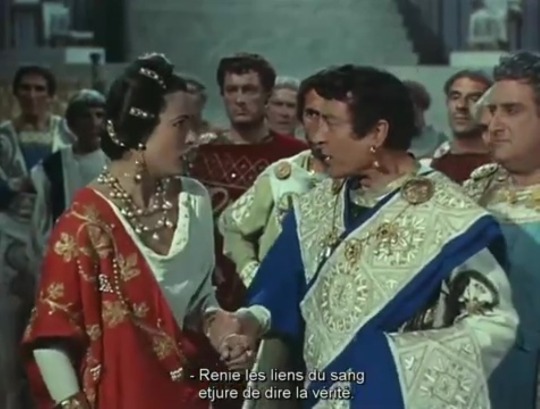

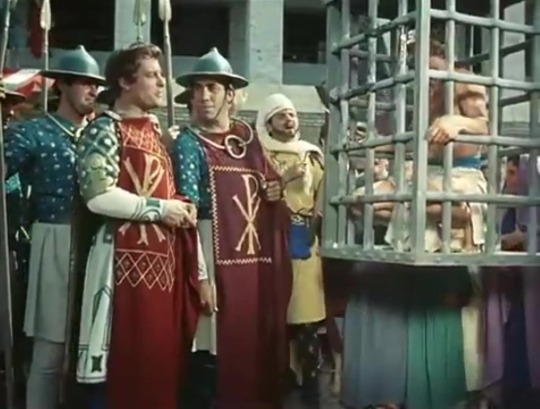






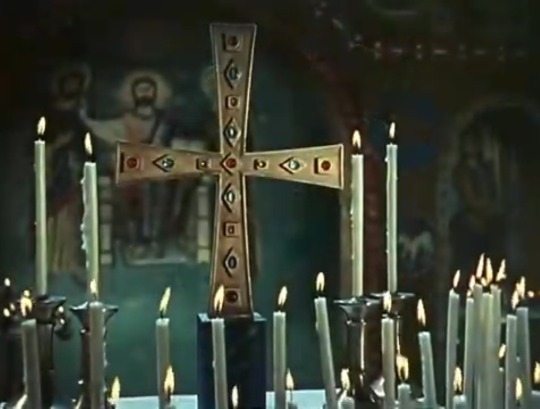

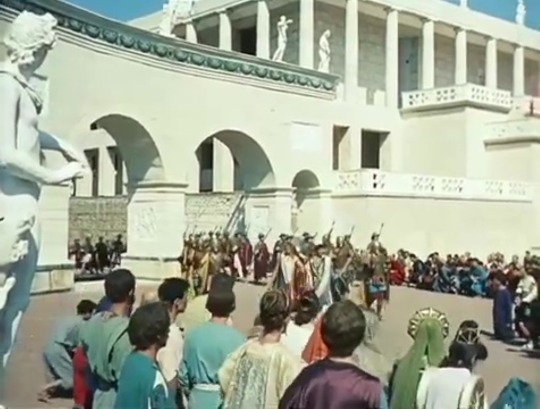

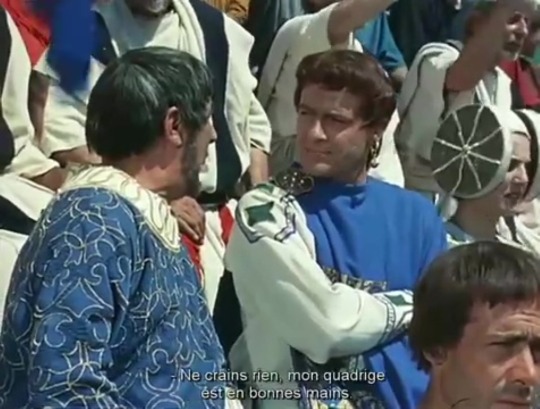
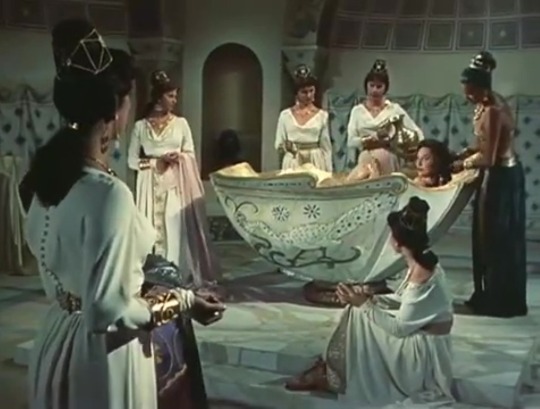
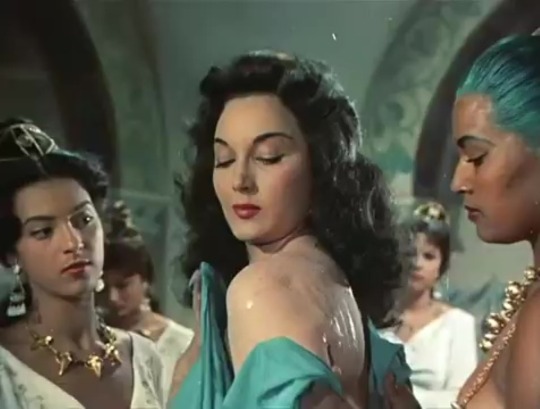





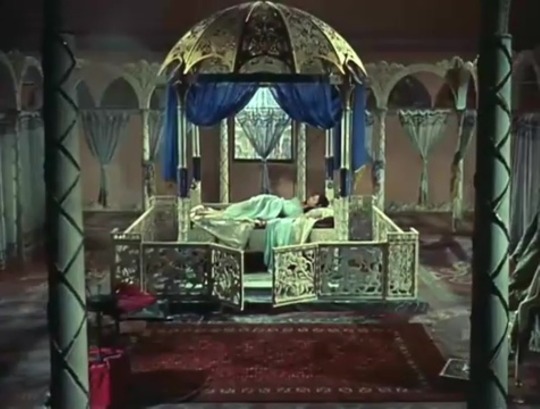


teodora, imperatrice di bisanzio, riccardo freda 1954
#teodora imperatrice di bisanzio#riccardo freda#1954#theodora#victorien sardou#les liens de sang#cronaca di un amore#miss italia#the cell#hamlet#paris nous appartient#alte nationalgalerie#james-simon-galerie#nofretete#himmelsscheibe#nebra#rom#about photography#cannonball#a doppia fascia
0 notes
Text


Plaque en hommage à : Victorien Sardou
Type : Lieu de naissance
Adresse : 16 rue Beautreillis, 75004 Paris, France
Date de pose :
Texte : Victorien Sardou, auteur dramatique, est né dans cette maison le 5 septembre 1831
Quelques précisions : Victorien Sardou (1831-1908) est un écrivain français. Il connaît des débuts difficiles lors des représentations de ses premières pièces qui font face à beaucoup de mécontentement. Ruiné et malade, il parvient toutefois à sortir de la misère grâce à une bienfaitrice, l'actrice Virginie Déjazet, qui le soutient financièrement, et accède finalement à une véritable notoriété avec ses nouvelles pièces de drame bourgeois et de satire sociale, abordant une grande diversité de thèmes, parfois avec des éléments historiques. Il fut également brièvement maire de Marly-le-Roi, et s'intéressa au spiritisme (il produira ainsi des "eaux-fortes médiumniques", des gravures dont il attribue la paternité à des artistes décédés comme Mozart).
0 notes
Text

-Poster for Victorien Sardou`s Gismonda-
128 notes
·
View notes
Photo

Sarah Bernhardt (22 October 1844 – 26 March 1923) was a French stage actress who starred in some of the most popular French plays of the late 19th and early 20th centuries, including La Dame Aux Camelias by Alexandre Dumas fils; Ruy Blas by Victor Hugo, Fédora and La Tosca by Victorien Sardou, and L'Aiglon by Edmond Rostand. She also played male roles, including Shakespeare's Hamlet. Rostand called her "the queen of the pose and the princess of the gesture", while Hugo praised her "golden voice". She made several theatrical tours around the world, and was one of the first prominent actresses to make sound recordings and to act in motion pictures.
She is also linked with the success of artist Alphonse Mucha, whose work she helped to publicize. Mucha would become one of the most sought-after artists of this period for his Art Nouveau style.
#Sarah Bernhardt#women on stage#XIX century#XX century#people#portrait#photo#photography#Black and White
237 notes
·
View notes
Text


Dream of the Endless
X
Alphonse Mucha: Poster for Victorien Sardou's Gismonda starring Sarah Bernhardt at the Théâtre de la Renaissance in Paris (1894)
#art nouveau sandman#the sandman art nouveau#the sandman x mucha#mucha#alphons mucha#alphonse mucha#dream of the endless#the sandman comics#the sandman neil gaiman#neil gaiman#neil gaiman the sandman#the sandman
255 notes
·
View notes
Text

Alphonse Mucha ֍ Poster for Gismonda (1894)
Gismonda, Victorien Sardou's four-act play, was premiered in the autumn of 1894 at the Théâtre de la Renaissance in Paris. Sarah Bernhardt was both director and actor. This poster by Mucha was produced to promote the new production which opened on 4 January, 1895.
Mucha portrayed Bernardt as an exotic Byzantine noblewoman wearing a splendid gown and an orchid headdress with a palm branch in her hand. This costume was worn in the last act, the climax of the play, where she joined the Easter procession. Placing her life-size figure on an arched platform, Mucha rendered the beauty and dignity of her personality onstage rather than representing her realistic features or the story.
Delighted with Mucha's design, Bernhardt continued to use this poster for her American tour in 1896.
16 notes
·
View notes
Note
Do we know what/if any medical treatments were used for Robespierre during his periods of sickness? I’ve heard detailed accounts of Marat’s baths and since we know who the Duplay’s personal doctor was I was wondering if we have any similar information for Robespierre.
I’m afraid we don’t know that.
For Robespierre’s doctor Joseph Souberbielle, Victorien Sardou (among others?) claimed to have met and from him obtained the information that Robespierre had either one or several varicose ulcers on his legs. We do however not get a more detailed description regarding the treatment of these ulcers other than the fact that Souberbielle every morning would come to ”dress” them.
Shortly after Robespierre’s death, Fréron wrote that he would eat a lot of oranges, since ”no doubt the acidity countered his bilious humour and helped his circulation.” But we should perhaps take whatever he has to say with a big grain of salt…
In his article ”My Strength and My Health are not Great Enough”: Political Crises and Medical Crises in the Life of Maximilien Robespierre, 1790-1794 (2013) Peter McPhee, who I would say is the historian who has dived the deepest into Robespierre’s alleged illnesses, also doesn’t give any more details regarding the treatments he was given. In his biography on Robespierre McPhee similarily regrets the fact that ”Souberbielle did not speculate on the nature of [Robespierre’s] more serious illnesses.”
19 notes
·
View notes
Text


from La Tosca (1887), Victorien Sardou
translation by me and @verdiesque
16 notes
·
View notes
Photo

Jean RIVIÈRE (1853-1924) - Théodora, vers 1891
Le visage et la parure de l'impératrice byzantine seraient inspirés de ceux de Sarah Bernhardt dans la pièce éponyme de Victorien Sardou créée en 1884
106 notes
·
View notes
Text

The Duplay House - I
I finally have my sources together enough to write about the Duplay house. The reason it’s taken so long is that I got much more invested in this than I meant to. I went as far as contacting the property manager of a couple of short stay apartments there to ask a few questions. (Turns out you can stay there! Although the reviews are a little depressing; no one mentions the building’s history.)
Even though it’s clear, from documents that became available after publication and from Élisabeth Le Bas’ description, that the buildings that made up the Duplay house were substantially different from the plans presented in G. Lenotre’s Paris Révolutionnaire (1895), Lenotre’s plans remain widely referenced. This makes sense, since, as far as I can tell, no one has put together an updated reconstruction. There’s also strong evidence that all the buildings were completely replaced in the early 19th c., but the idea that portions of the original house remain still came up often in my research. And honestly, unless you too are obsessed with the (very fun) fight between Ernest Hamel and Victorien Sardou and their dueling La Maison de Robespierre books, the exact layout is not critical to understanding Robespierre’s life. But I’m an architect and I can give it a go, so I’ve been working on a set of plans based on the most reliable descriptions.

Lenotre’s inaccurate plans, color coded for clarity and to indicate the location of the rooms Charlotte and Augustin stayed in.
Even though the original buildings are gone, you can still get a sense of the house from the 19th c. buildings that replaced them. The newer structures follow the same general outline. You could go up to the first floor of Louboutin Saint-Honoré and stand in the same space where Charlotte and Augustin’s rooms were:

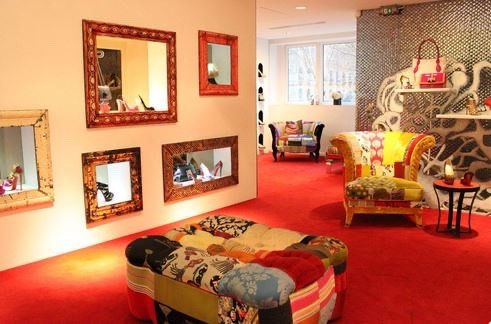
Or, as Anthony Pascal did in 2014, get a sense of the scale of Robespierre’s room by visiting the current west wing:


Photo from Pascal’s blog and of a current apartment directly above on the 2nd floor.
I was sad to learn that the restaurant that used to be Le Robespierre, and was until recently part of Aux Delices de Manon, has permanently closed. You used to enter it through their storefront next door, now boarded up and “awaiting a new luxury tenant”. I don’t know what the plan is for the restaurant space itself.


I’m going to break this up into multiple posts. Partly because I have too many images, and partly because it will help me organize my thoughts. So it will go (probably):
Part II - The Historians. How Lenotre’s plan got to be so wrong, and the time Ernest Hamel faked a floor plan and blamed Élisabeth.
Part III - The context and history of the property, and what we actually know about the house (A lot!)
Part IV - My best attempt at an accurate plan.
71 notes
·
View notes
Text







OTD in Music History: Beloved Italian opera composer Giacomo Puccini (1858 - 1924) dies in Brussels as a result of complications stemming from experimental radiation therapy that had been deployed in a failed attempt to treat his recently-diagnosed throat cancer; uncontrolled bleeding induced by the radiation caused a heart attack just one day later. (Puccini never even knew just how serious his cancer was, since that news was revealed only to his son.)
Generally regarded as the greatest and most successful proponent of Italian opera after Giuseppe Verdi (1813 - 1901), Puccini was actually descended from a long line of composers dating all the way back to the late-Baroque era. (He was by far the most successful.)
Although his early work was firmly rooted in traditional late-19th-century Romantic Italian opera, in his mature operas, Puccini branched out into the then-popular "verismo" style (which emphasized grittiness and a heightened if melodramatic sense of "reality”) and actually became one of the leading exponents of that movement.
Puccini's wrote almost exclusively for the operatic stage, and his most renowned works are "La boheme" (1896), "Tosca" (1900), "Madama Butterfly" (1904), and "Turandot" (1924, left unfinished at his death) -- all of which rank among the most popular and most frequently performed operas in the entire repertoire. Indeed, Puccini was that rare great composer who truly succeeded in financially capitalizing on his own greatness; when he died, he left behind an estate worth a staggering $4,000,000 (~$70,000,000 adjusting for inflation).
PICTURED: A first edition copy of the printed piano-vocal score for Puccini's immortal opera "Tosca," which he signed and inscribed to a fan in Milan in 1910.
#composer#conductor#music history#classical music#opera#bel canto#Giacomo Puccini#Puccini#classical composer#Tosca#Romantic Italian opera#La Tosca#Victorien Sardou#play#music#opera house#Melodrama#maestro#virtuoso#verismo
9 notes
·
View notes